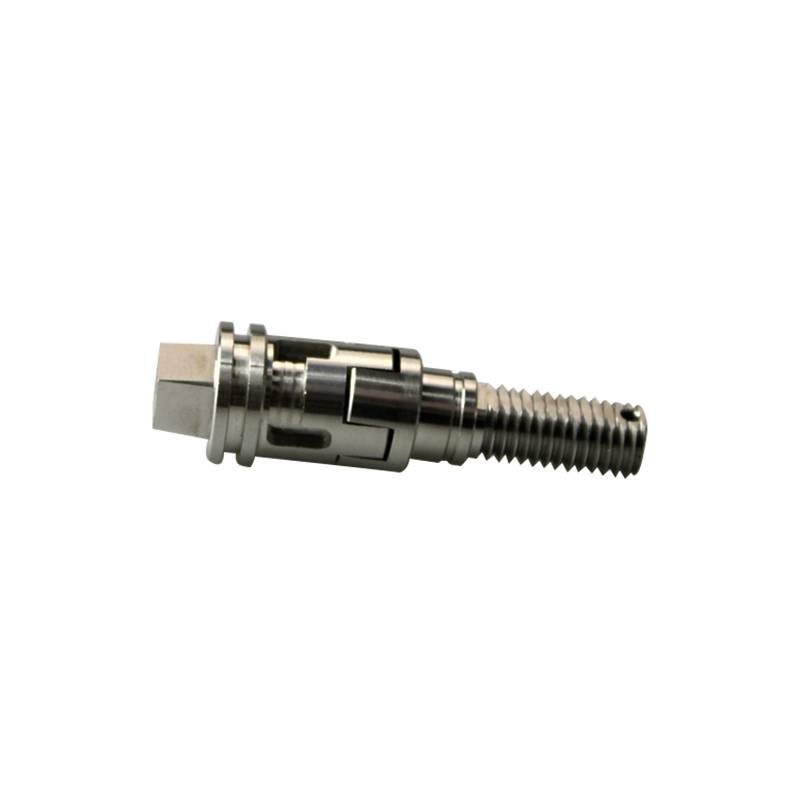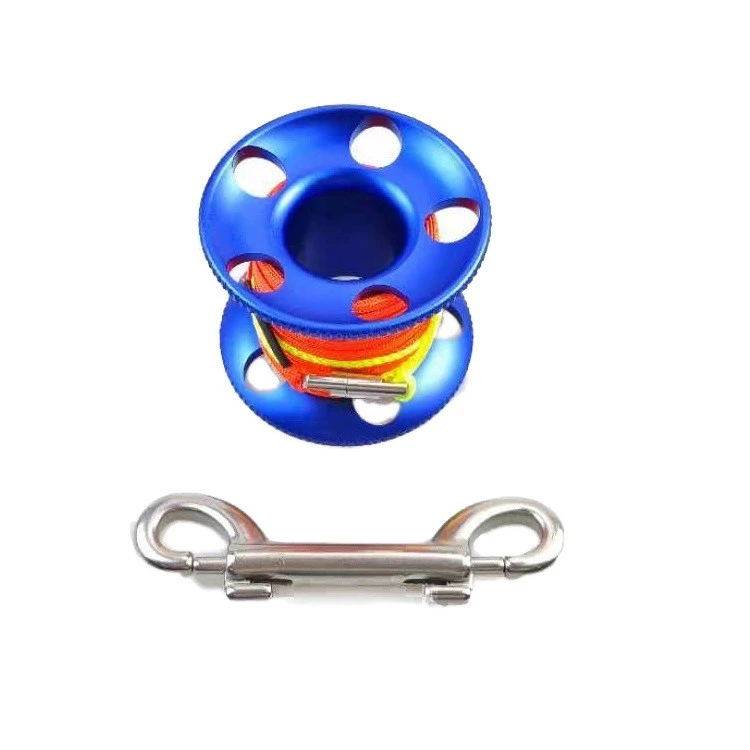Safety-critical aerospace manufacturing applications demand secure threads that won’t loosen. Manufacturers now have an excellent, comprehensive solution via the latest self-locking threads for thread milling and tapping that feature a wedge ramp angle on the thread’s flank.
Whether it is the screws used to assemble a piece of budget furniture or those that keep F-15 Eagle fighter jets from flying apart during Mach 3 maneuvers, all have the same basic V-shape thread profile, despite their varying quality levels. Some are machined using “single-point” threading techniques on CNC lathes, although many more are rolled, chased, or whirled using special threading heads, especially where higher quantities are required. Custom Cnc Aluminum Parts

But because these fasteners accomplish nothing without a threaded counterpart to screw into, it’s equally important to describe this side of the machining equation. For the majority of all threaded holes, this is accomplished using one of two cutting tools: a thread mill, or a tap. Single-point threading is also an option (on CNC lathes and multitasking machines, at least), but given the widespread availability of thread mills and cut or form taps—not to mention their greater productivity—there are relatively few occasions where single-pointing of internal threads is necessary.
Regarding thread tolerances, note that all threads, whether internal or external, are made to a specific class of fit and must be machined and measured based on those specifications. For example, a 1/4-20 UNC 2A is a free-fitting, coarse thread screw, while a 1/4-20 UNC 3A is considered a medium fit, higher quality thread and is therefore machined to slightly closer tolerances (it’s the 2 and 3 immediately before the B in each of these examples that determines the class of fit). These screws’ female counterparts are designated 1/4-20 UNC 2B and 1/4-20 UNC 3B, respectively (the B means internal thread; an A signifies external). As with external threads, each must be inspected during manufacturing using gages of the same class. The same holds true for metric threads, albeit using different terminology.
Adhering to the guidelines for thread manufacturing, their different classes of fit, and proper tolerancing and gaging when machining screw threads is the first step toward making strong, dependable fasteners. However, even the highest quality screw, nut, or bolt can come loose unexpectedly (often at the worst possible time) when subjected to vibration and other forces.
That is because threaded fasteners are intended to come apart. It’s an unfortunate truth that all machinery and other mechanical assemblies must be constructed in a manner that allows them to be serviced, refilled, and repaired. If not, they could simply be welded together, eliminating the need for threads entirely.
One common approach to securing these fasteners is with a pair of washers—one flat, the other split—known as a spring or lock washer. When properly torqued, these washers make the screw much less likely to come loose than one without. The flat washer also prevents damage to the surface of the mating component. Unfortunately, this arrangement is not failure proof. As many manufacturers have found, vibration and dynamic loading tend to loosen even the most tightly torqued screw, lock washer, or nut.
Because of this, some recommend applying a liquid adhesive or a “dry patch” to the threads during assembly to prevent loosening, which is why any mechanic is familiar with using Loctite and other commercially available adhesives. They're also familiar with the fact that these adhesives are both messy and expensive, while applying them makes screws challenging to remove, and the threads require thorough cleaning before reassembly— driving up time and costs even further.
Other manufacturers have tried solving the problem by arming screws and bolts with tooth-like serrations on the head’s bottom face, thus forcing it to bite into the workpiece. However, these specialty fasteners aren't much more secure than the lock washer approach, and they damage the workpiece.
Still, others specify the use of safety, tie, or lock wires. These are inserted through a drilled hole in the screw head and then secured to another fastener or attached to the workpiece. Again, this not only adds cost, but technicians must be trained on the tying procedure; worse, the fastener is still free to come loose—the wire's primary role is to keep it from falling out, possibly damaging the equipment. In other words, safety wires do not guarantee that torque is maintained.
There are also jam nuts, sometimes called double nuts, which are cumbersome to use and make it difficult to attain the proper torque. Tab washers, as their name implies, have multiple tabs that the installer must bend upwards after assembly, taking time. Similarly, castle nuts require insertion of a cotter pin through a hole in the nut and its mating bolt or threaded stud. And finally, some manufacturers make nuts containing nylon inserts. These absorb the vibration that loosens fasteners, but cannot withstand high torque and are thus limited to non-safety critical applications.
Now there is a successful solution to secure fasteners. It involves modifying the conventional 60° form by cutting a locking "ramp" on the internal thread, securely and predictably locking the fastener in place while making it easy to assemble and disassemble multiple times.
In 1979, the Detroit Tool Co. made a simple modification to a standard thread profile. Dubbed Spiralock, it soon became quite popular for use in mission-critical applications by military and aerospace manufacturers, and eventually the medical industry.
With a conventional 60° thread form, the mating components make contact along their respective thread flanks. Unfortunately, this creates a small amount of radial clearance between the fastener’s major diameter and that of the threaded hole; when subjected to vibration, this clearance allows just enough transverse motion for the fastener to gradually loosen.
A Spiralock-threaded hole, on the other hand, is made with a 30° “ramp” or wedge form adjacent to the thread’s root and oriented perpendicular to the direction of stress. This wedge surface engages with the crests located at the fastener’s major diameter—as the screw is tightened, and it forms a continuous and concentrated point of contact along the thread’s entire length.
The wedge ramp design prevents any transverse movement, thereby locking the fastener securely in place while also making the thread much stronger. Studies show that while a traditional tapped or thread milled hole concentrates as much as 75 percent of the load on the first two threads, one with a wedge lock design carries the load evenly along the thread’s entire length.
There are other reasons for the design’s success. Aside from eliminating the need for adhesives, dry patches, safety wire, and other costly, often unsatisfactory methods of securing fasteners, it's much easier to repeatedly assemble and disassemble components. There are no more concerns over adhesive residue, threads are less prone to fatigue and subsequent stripping, and because the locking mechanism is contained within the female thread, standard UN and ISO screws or threaded studs can be used. This makes it both easy and cost-effective to implement.
Unfortunately—and somewhat ironically, considering the safety-critical nature of these fasteners—no ANSI/ASME or DIN standards exist for the wedge ramp design. Many in the manufacturing industry adopted what was then a proprietary thread form. When the patent ran out in 1994, Detroit Tool sold the Spiralock name to Stanley Engineered Products, a manufacturer and distributor of threaded fasteners, rivets, washers, and other hardware items.
Since that time, the wedge ramp thread form has continued to gain popularity, and for good reasons. Unfortunately, manufacturers choosing to adopt it have long been locked into a single supplier, one that does not manufacture cuttings tools but instead sells them to its customers on a private label basis.
Emuge-Franken, a manufacturer of high-performance taps, thread mills, end mills, drills, and other rotary tools, recognized this and obtained the rights to manufacture taps, thread mills, and inspection gages for the wedge ramp form. Because it wasn’t allowed to use the Spiralock name, Emuge filed its own trademark —Self-Lock— and began producing thread-locking cutting tools and accompanying gages at its plant in Germany.
Although Spiralock and Self-Lock are identical in thread form and function, they are not interchangeable. This is due to some slight dimensional differences, but it means that manufacturers need to select the correct gages when producing and measuring these threads and must therefore decide on one brand or the other.
Because there are no standards for locking wedge ramp-style thread forms, OEMs who specify these forms in their product designs should first confirm that in-house machine shops and suppliers have a comprehensive, well-supported platform for producing these threads.
Top on the list for this platform are high-quality, readily available, and cost-effective taps and thread mills. The supplier should also offer a broad assortment of these cutting tools, with the geometries and coatings needed to tackle different materials productively. In addition, manufacturers need precision gages with which to measure threaded holes during production, and even though neither ANSI/ASME nor DIN standards exist for wedge ramp fasteners, these gages should be traceable and certified to known, unambiguous sources.

Custom Made Cnc Parts Last but not least, taps, thread mills, and indeed all cutting tools perform best when gripped in high-precision, extremely rigid toolholders. If these toolholders come from the same supplier, machining life becomes simpler and production more efficient. The same can be said for a supplier that stands behind its products and can offer the technical support needed for productive machining, a statement that's especially true for internal threading, one of the more demanding machining applications.